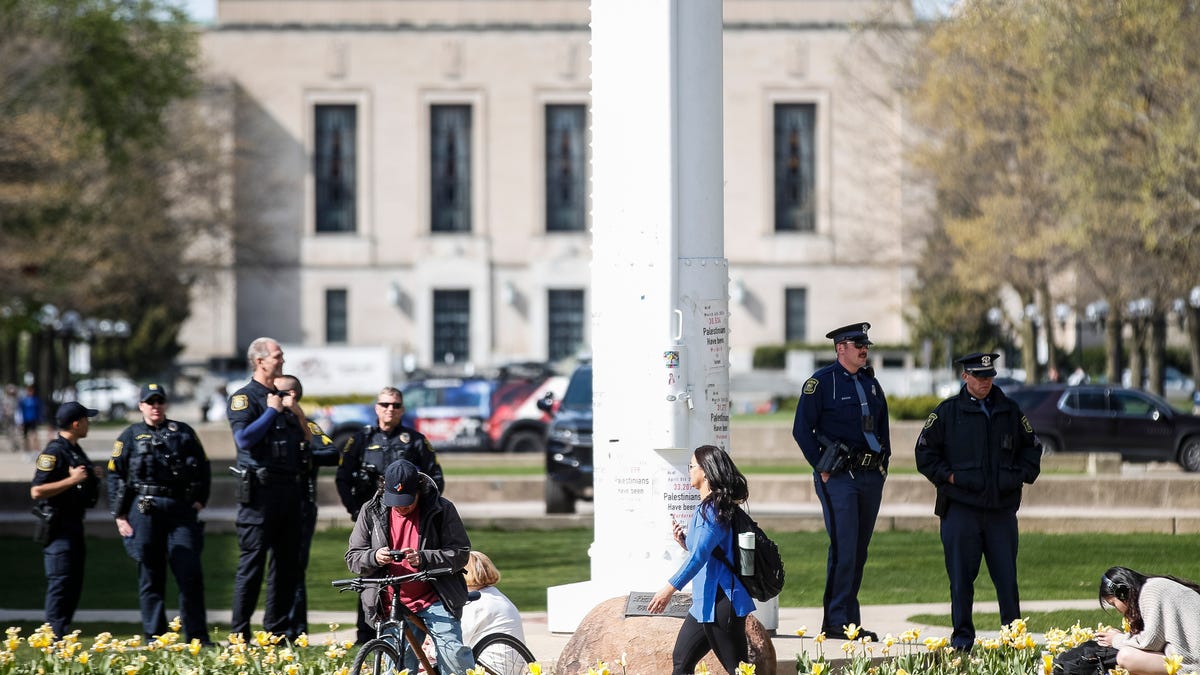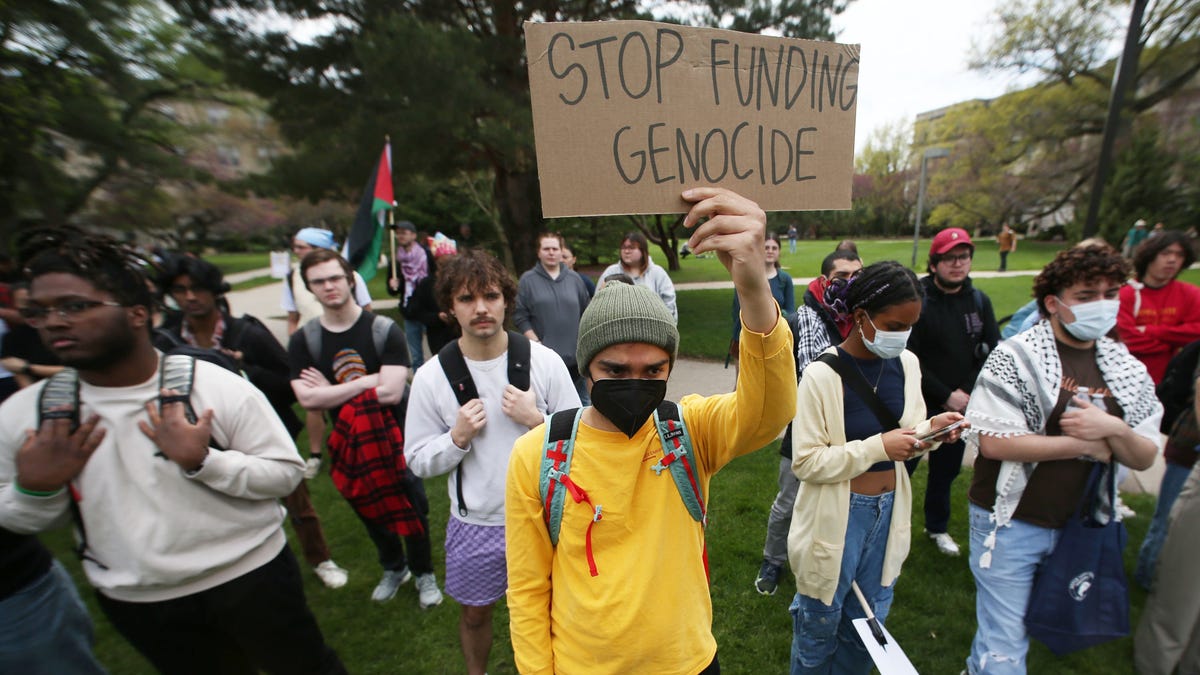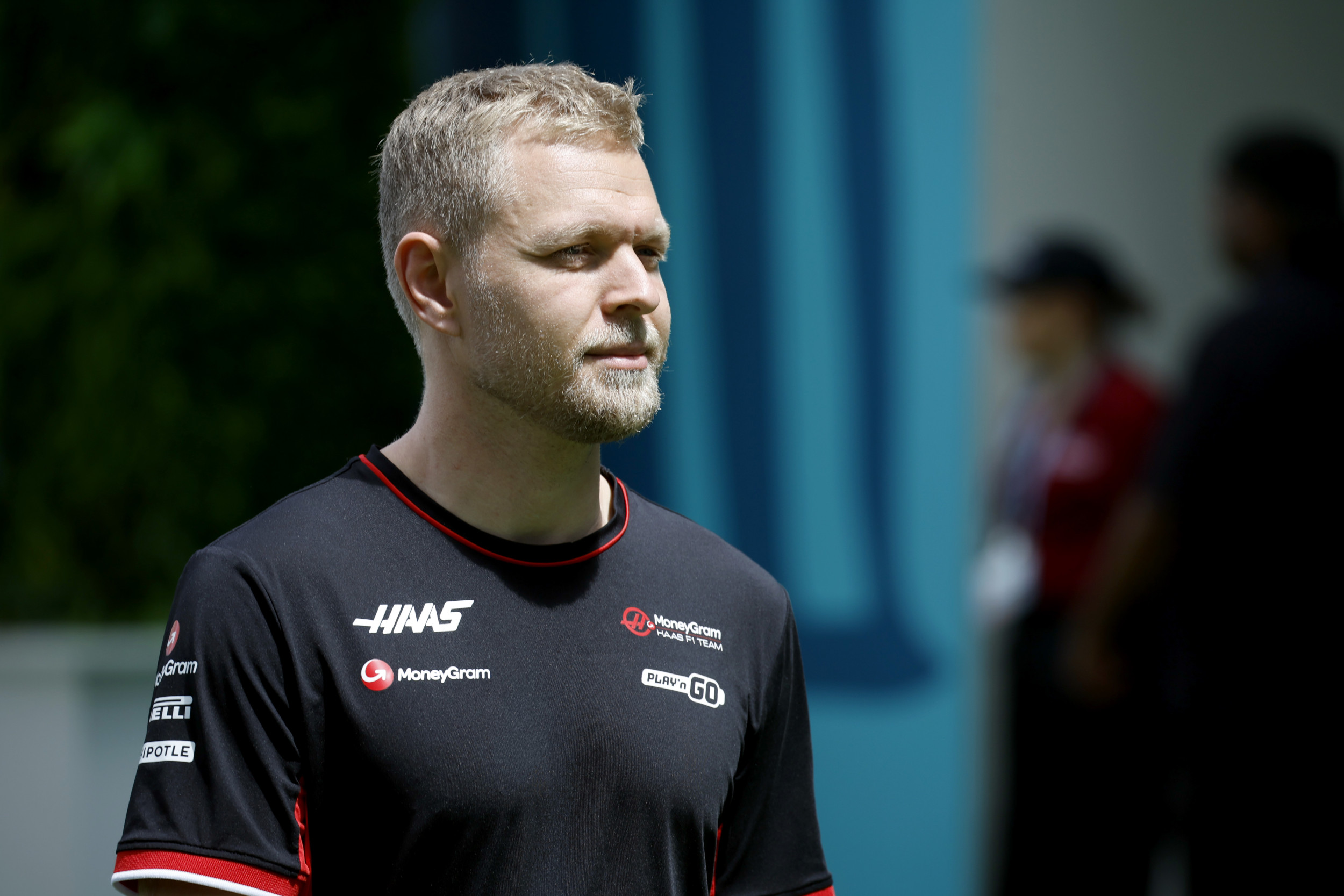World
Video: ‘We’re Aware of the Location’: Aid Groups in Gaza Coordinated With I.D.F. but Still Came Under Fire

[MUSIC PLAYING] On April 1, an Israeli drone targeted a convoy of white cars, killing seven World Central Kitchen workers. The group, based in Washington, D.C., had coordinated the convoy’s route with the Israel Defense Forces, or I.D.F. “We were doing the right protocols. We were engaging with the I.D.F. in the way we all should be doing. Like every minute, everybody knew where everybody was.” This process is called deconfliction, a wartime safety system aid groups use around the world to help combatants compile a list of humanitarian locations in order to avoid accidental attacks. – [NON-ENGLISH SPEECH] More than 200 aid workers have been killed in the war in Gaza, according to the United Nations. In the case of the World Central Kitchen, or W.C.K., the I.D.F. called the strike a grave mistake that can happen when fighting an enemy that embeds in the civilian population. “The W.C.K. coordinated everything correctly with the I.D.F. in advance. This operational misidentification and misclassification was the result of internal failures.” But these internal failures were not new. Using visual evidence and internal communications obtained by The Times, we examined strikes on six aid group operations that came under Israeli fire despite using the I.D.F.’s deconfliction system. These humanitarian organizations have a direct line to the Israeli military, and come from Western countries, including Israel’s strongest allies. Some of their operations were clearly marked. “Our flag. We identify it.” Or located in a special area Israel says is safe for civilians. It’s not clear whether the I.D.F. failed to alert their targeting teams about the presence of civilians, or if they decided eliminating a target was more important. But the pattern of attacks shows that in Israel’s battle against Hamas, not even the places with every available avenue of protection are safe from I.D.F. strikes. Israel has said that it has deconflicted thousands of humanitarian convoys successfully. In response to questions from The Times, the I.D.F. said it has been targeting military targets in order to dismantle Hamas, but is committed to all international legal obligations, and has put in place detailed regulations for dealing with sensitive sites. Weeks before the World Central Kitchen strike, a logistics coordinator for another American aid group called ANERA returned home after distributing supplies. Mousa Shawa was still wearing his ANERA vest when an Israeli strike hit the house, killing him; his 6-year-old son, Kareem; and several neighbors. – [NON-ENGLISH SPEECH] Mousa had worked at ANERA for 13 years and felt grateful to have a job that would keep his family safe, his wife, Dua, told The Times. – [NON-ENGLISH SPEECH] ANERA shared emails with The Times showing they’d repeatedly sent the I.D.F. coordinates and photos of their staff shelters, including the two-story residential building where Mousa’s family and others had been living since the war began. Israeli officials confirmed the location was being processed in their system. On March 4, in response to a request from the I.D.F., ANERA sent this email to ensure their warehouses and shelters, including Mousa’s, were still registered in Israel’s deconfliction system. But just four days later, the house was blown apart. Visual evidence shows it was a surgical strike in a dense cluster of houses. All were left essentially untouched, but one, which had only the top floor destroyed. Munitions experts told The Times this kind of targeted damage points to a precision Israeli air-dropped bomb. – [NON-ENGLISH SPEECH] In a statement to The Times, the I.D.F. said it targeted a Hamas terrorist who participated in the October 7 attack, and expects military investigators to examine the strike. ANERA said they’ve received, quote, “No information about who or what may have been targeted, or why,” and want an independent investigation into how a location repeatedly deconflicted with the I.D.F. came under attack. Before the strike on Mousa’s house, Doctors Without Borders said two staff shelters registered with Israel’s deconfliction system came under fire without warning or official explanation. “We’ve seen tracers going towards the sea.” At this shelter on January 8, the aid group said a projectile was fired through the building, killing a 5-year-old girl. – [NON-ENGLISH SPEECH] Photographs show the remnants of an Israeli tank shell lying outside. In February at a different Doctors Without Borders staff shelter, two family members were killed when incoming fire set off an explosion. Seven others, mostly women and children, were injured. Visuals of the aftermath show a large Doctors Without Borders flag clearly marked the building. The entry point of the munition and the damage left behind suggests a medium- to large-caliber weapon, experts said. According to the aid group, it was an Israeli tank shell. The I.D.F. previously told British broadcaster Sky News they fired because they had identified, quote, “Terror activity at the building.” In a statement to The Times, the I.D.F. denied striking the first shelter on January 8 and said the second incident will be reviewed by military investigators. Doctors Without Borders refuted any allegations of terror activity in their facilities, and said the attacks on civilian spaces show that nowhere in Gaza is safe. What went wrong in the deconfliction system is still not clear to the aid group. “This pattern of attacks is either intentional or indicative of reckless incompetence.” The very same questions would be raised in the British Parliament after another strike, which was examined by The Times. On the morning of January 18, this building was rocked by a giant explosion. A bomb landed on the wall around the compound, which was being used to house medical staff from the International Rescue Committee, based in the U.S., and the U.K. group Medical Aid for Palestinians, whose logo is visible on bedding and luggage in the wreckage. Several people were injured. Six medical workers were withdrawn from Gaza. Text messages between aid staff and an I.D.F. official reviewed by The Times show that a month before the attack, the Israeli military was aware of the compound’s location. When the aid worker asks, “So we can bring them to this chalet? It is still safe?” The I.D.F. response is, “Yes.” The compound had two additional layers of protection. British officials, The Times confirmed, used high-level diplomatic channels to ensure the compound was deconflicted. And it was located in the neighborhood that Israel has repeatedly designated as the humanitarian zone, safe for civilians. In a U.N. report reviewed by The Times, investigators indicated the crater and munition debris most likely point to an MK 83, which is a 1,000-pound bomb made in the U.S. “Strikes still took place. So —” British lawmakers demanded answers. “What investigation is being conducted? What has been the response of the I.D.F. to this? Has H.M.G. seen the targeting permissions for that airstrike?” After weeks of high-level pressure — “It was raised by the foreign secretary in his meetings in Israel last week.” Israel provided six different, and often conflicting, explanations, according to the aid groups. Sometimes Israel said they were “not operating in that area.” Other times, they claimed their bomb was attempting to hit a target adjacent to the compound. They also said what struck the compound wasn’t actually a bomb, but a “piece of aircraft fuselage.” The I.D.F. told The Times they did not strike the location at all on January 18. After the strike on the World Central Kitchen convoy, which unleashed global outrage, Israel’s response was much more swift and clear. Israeli officials launched a new humanitarian coordination cell, fired commanders and opened new aid access points. But after months of Israel’s war against Hamas — – [NON-ENGLISH SPEECH] questions remain about to what extent the I.D.F. will hold their fire in places where aid workers or civilians are present.

World
What a judge's gag order on Trump means in his hush money case
NEW YORK (AP) — Virtually every day of his hush money criminal trial, former President Donald Trump talks about how he can’t talk about the case.
A gag order bars Trump from commenting publicly on witnesses, jurors and some others connected to the matter. The New York judge already has found that Trump, the presumptive Republican nominee for president, repeatedly violated the order, fined him $9,000 and warning that jail could follow if he doesn’t comply.
But the order doesn’t stop Trump from talking about the allegations against him or commenting on the judge or the elected top prosecutor. And despite a recent Trump remark, it doesn’t stop him from testifying in court if he chooses.
As he fights the felony charges against him while running for president, Trump has at times stirred confusion about what he can and can’t do in the case. He has pleaded not guilty.
So what does the order do, what doesn’t it and where did it come from?
WHAT IS A GAG ORDER?
Generally speaking, a gag order is a judge’s directive prohibiting someone or people involved in a court case from publicly commenting about some or all aspects of it. In Trump’s case, it’s titled an “Order Restricting Extrajudicial Statements,” with “extrajudicial” meaning outside of court.
Gag orders, particularly in high-profile cases, are intended to prevent information presented outside a courtroom from affecting what happens inside.
Trump also is subject to a gag order in his federal criminal election interference case in Washington. That order limits what he can say about witnesses, lawyers in the case and court staff, though an appeals court freed him to speak about special counsel Jack Smith, who brought the case.
In his recent New York civil fraud trial, Trump was fined a total of $15,000 for comments he made about that judge’s law clerk after a gag order barred participants in the trial from “posting, emailing or speaking publicly” about the court’s staff.
The U.S. Supreme Court has acknowledged that gag orders can pit fair trial rights against free speech rights. The court has struck down some orders that barred the press from reporting on certain cases or court proceedings and rejected as too vague a Nevada court rule that limited what all lawyers could say out of court.
IS TRUMP FIGHTING THE GAG ORDER?
Yes. Before the trial, he asked a state appeals court to postpone the trial while he appeals the gag order, but the court refused. His appeal of the order itself is ongoing.
WHO IS COVERED BY THE GAG ORDER ON TRUMP?
Initially imposed March 26, the gag order bars Trump from making or directing others to make public statements about any juror and about any “reasonably foreseeable” witness’ participation in the investigation or the trial.
It also bars any statements about lawyers in the case, court staffers, prosecution aides and relatives of all of the above, to the extent that the statements are intended to “materially interfere with, or to cause others to materially interfere with” their work on the case “or with the knowledge that such interference is likely to result.”
The order doesn’t apply to Judge Juan M. Merchan or to Manhattan District Attorney Alvin Bragg, whose office is bringing the case. It does apply to comments about their family members, however. Merchan added that provision on April 1 after Trump lashed out on social media at the judge’s daughter, a Democratic political consultant, and made a claim about her that was later repudiated by court officials.
Trump is also allowed to talk about his political opponents, as Merchan made clear on Thursday.
The order also doesn’t bar witnesses from commenting on Trump. Michael Cohen, Trump’s ex-lawyer and an expected witness, has routinely attacked his former boss, leading Trump to complain about not being able to respond in kind.
CAN TRUMP TESTIFY?
Yes. The U.S. Supreme Court has held that criminal defendants have a constitutional right to take the stand in their own defense — or not to.
There was some confusion after Trump said Thursday that because of the gag order, he was “not allowed to testify.” In context, it appeared he was actually referring to his ability to respond to a reporter’s court-hallway question about a witness’ testimony that afternoon.
Trump clarified to reporters Friday that he understood the order wasn’t a bar on testifying. Merchan emphasized the same in court.
“I want to stress, Mr. Trump, you have an absolute right to testify at trial, if that’s what you decide to do after consultation with your attorneys,” Merchan said.
WHY DID TRUMP GET FINED? WHAT CAN’T HE SAY?
Merchan found that Trump violated the gag order with social media posts that laid into Cohen. Among the offending posts: one that asked whether “disgraced attorney and felon Michael Cohen been prosecuted for LYING,” a repost of a New York Post article that described Cohen as a “serial perjurer,” and a Trump post referring to Fox News host Jesse Watters’ claim that liberal activists were lying to infiltrate the jury.
Merchan noted that Trump’s comment on the Watters segment misstated what the host had actually said, making the comment “the words of Defendant himself.”
On the other hand, Merchan declined to sanction Trump for an April 10 post that referred to Cohen and Stormy Daniels, the porn performer who got a $130,000 hush money payment that’s at the heart of the case, as “sleaze bags.”
Trump contended that he was responding to previous comments by Cohen, and the judge said the back-and-forth gave him pause as to whether that post met the bar for a violation.
COULD TRUMP REALLY GO TO TO JAIL OVER THE GAG ORDER?
When Merchan fined Trump $1,000 apiece for nine violations — the maximum fine allowed by law — he wrote that “jail may be a necessary punishment” for some wealthy defendants who won’t be deterred by such a sum.
Merchan added that he “will not tolerate continued willful violations” of the gag order and that, if “necessary and appropriate,” he “will impose an incarceratory punishment,” meaning jail.
It’s unclear what would rise to the level of “necessary and appropriate.”
Defense lawyer Todd Blanche indicated in court Friday that he plans to appeal the judge’s finding this past week that Trump violated the gag order.
Prosecutors have asked Merchan to hold Trump in contempt again and fine him $1,000 for each of four alleged violations from April 22-25. But the prosecution isn’t asking for the former president to be locked up over those comments because they happened before Merchan’s jail warning and because “we’d prefer to minimize disruption to this proceeding,” prosecutor Christopher Conroy said.
World
Fourth body found in search for US and Australian surfers who mysteriously vanished in Mexico
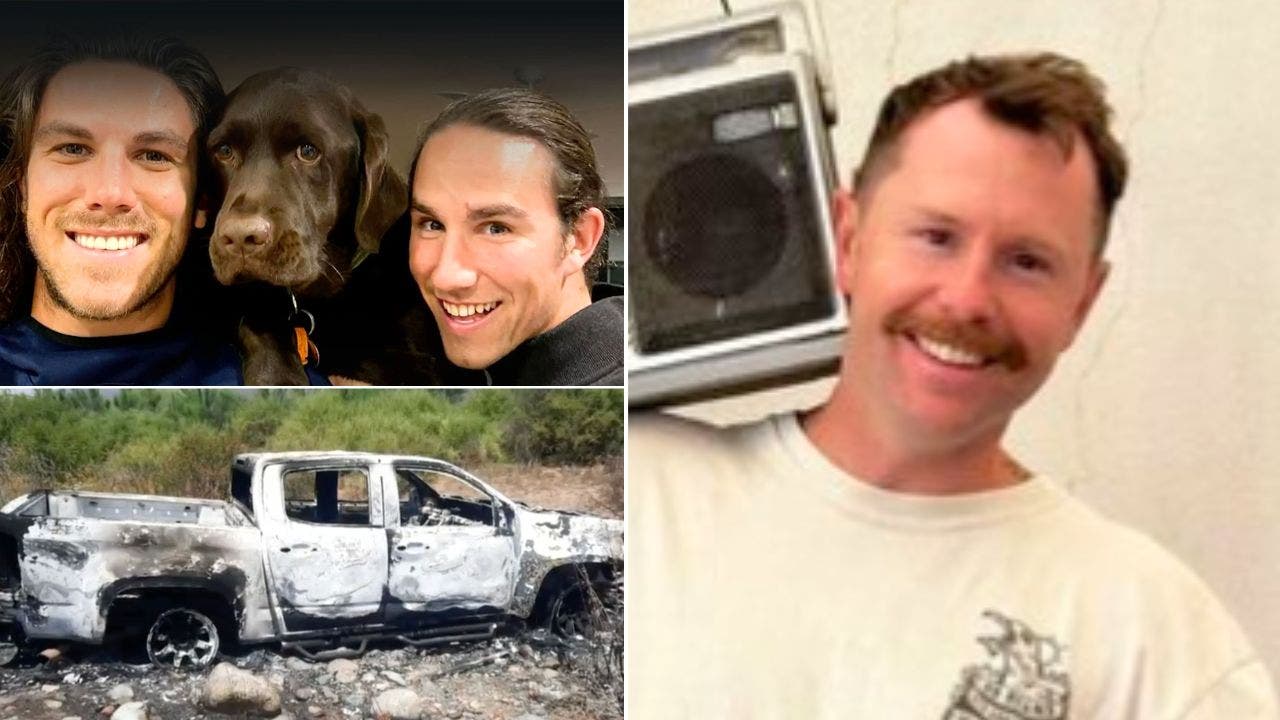
A fourth body has reportedly been discovered in a popular Mexican tourist area, where an American and two Australians vanished last week while on an apparent camping and surfing trip, the local prosecutor’s office said in a statement late on Friday.
American Jack Carter Rhoad, 30, as well as Australian brothers Callum Robinson, 33, and Jake Robinson, 30, were last seen on April 27, the Baja California state prosecutor’s office previously announced. They did not show up at their planned accommodation last weekend.
Investigators discovered three bodies dumped in a pit while searching for the trio on Friday, although officials have not confirmed if the bodies are those of the missing men.
The fourth body was found nearby, the New York Post and other outlets reported. It’s unclear if it’s connected to the other three.
2 AMERICANS FOUND DEAD IN HOTEL ROOM IN MEXICO’S BAJA CALIFORNIA
Australian brothers Callum Robinson and Jake Robinson, top left, and US citizen Jack Carter Rhoad, right, who are missing in Mexico. (Reuters)
Forensic tests on the remains will be conducted by a state laboratory, which will allow for positive identification of the bodies, the prosecutor’s office said in its statement.
Investigators continue to search the rugged area where the bodies were found for additional evidence, the statement added.
The bodies were found in a rugged hillside area in the Mexican state of Baja California near the popular tourist town of Ensenada, about 90 minutes south of the U.S.-Mexico border. Video from the scene shows rescuers installing ropes to enter the pit where the bodies were discovered. The site is cordoned off by police, while a navy boat was also visible in the sea nearby.
The site where the bodies were discovered near the township of Santo Tomás, was near the remote seaside area where the missing men’s tents and the burned-out Chevrolet Colorado pickup truck were found Thursday on a remote stretch of coast.
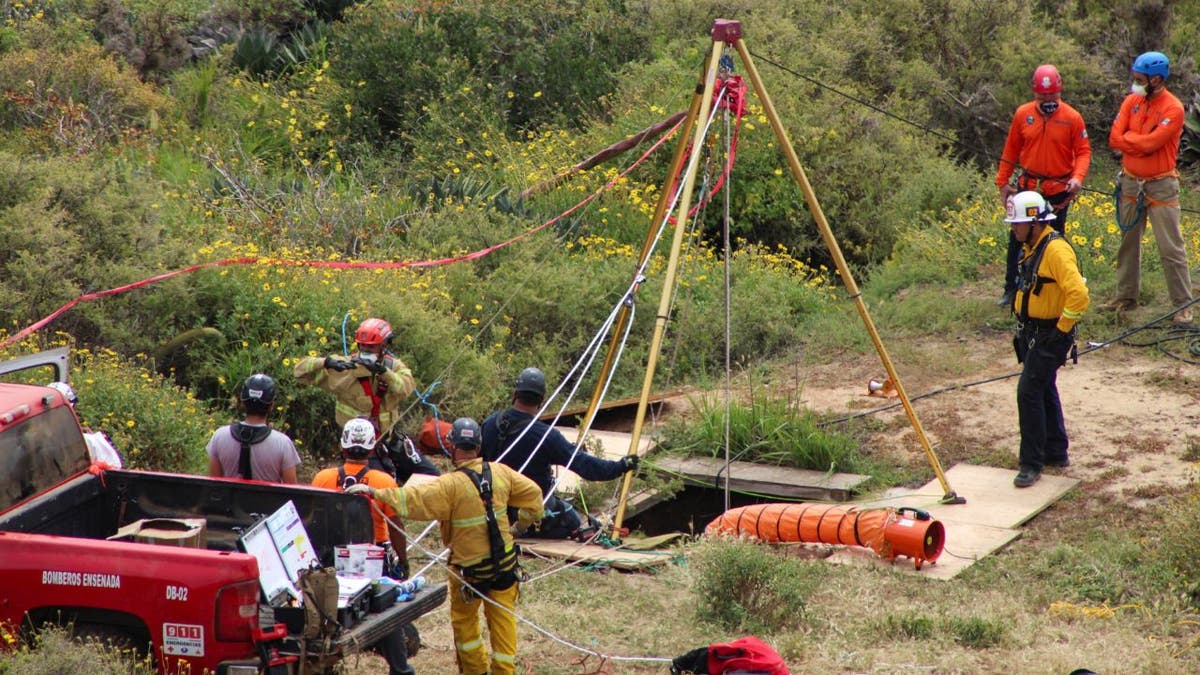
Members of a rescue team work at a site where three bodies were found in Baja California. The team have been looking for one American and two Australian tourists who have been reported missing. (Reuters)
It is unclear what types of injuries the victims suffered or how they died.
“There is a lot of important information that we can’t make public,” María Elena Andrade Ramírez, the chief state prosecutor said.
Baja California prosecutors said Friday that three people had been arrested and charged with a crime equivalent to kidnapping. It was unclear if they might face more charges.
Ensenada Mayor Carlos Ibarra Aguiar said in a news release that a 23-year-old woman had been detained with drugs and a cellphone that had a wallpaper photo of one of the missing men, The San Diego Union-Tribune reports. Officials didn’t specify how the three people were connected to the investigation, saying only that some were directly involved and others indirectly.
LUXURY RESORT SHUTTERS IN MEXICO’S BAJA CALIFORNIA AFTER MYSTERIOUS DEATHS OF 2 AMERICANS

A missing persons’ poster of the trio was distributed earlier this week. (Reuters)
Investigators said that a missing persons report was filed 48 hours after the men were last seen, although the prosecutor’s office began investigating as soon as posts began circulating on social media.
María Elena Andrade Ramírez, the chief state prosecutor, said that while drug cartels are active in the area, she said, “all lines of investigation are open at this time. We cannot rule anything out until we find them.”
The Baja California Attorney General’s Office has said that it has maintained contact with the FBI and relatives of the victims, through consular agencies.
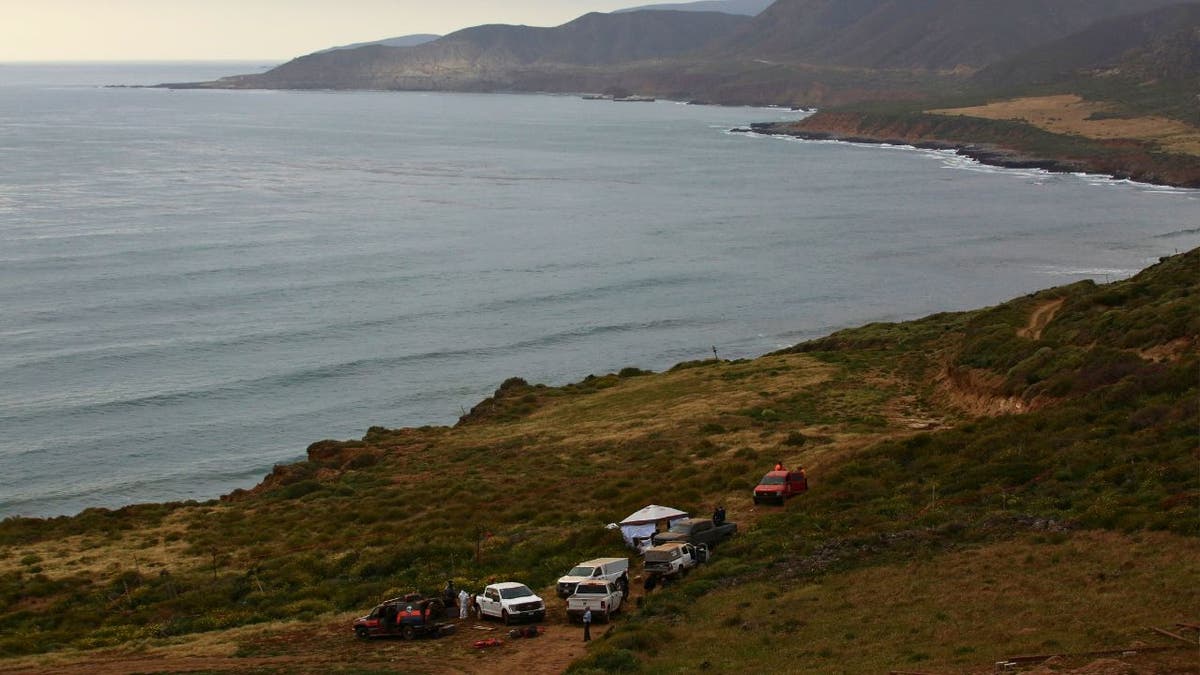
Members of a rescue team work at a site where three bodies were found in the state of Baja California where one American and two Australian tourists were reported missing.
On Wednesday, the missing Australians’ mother, Debra Robinson, posted on a local community Facebook page an appeal for help in finding her sons and noted that Callum is diabetic.
The Australian media reports that Jake is a doctor, while Callum lives in San Diego and is a member of Australia’s national lacrosse team.
The State Department’s travel advisory lists Baja California under its “reconsider travel” category due to crime and kidnapping.
In 2015, two Australian surfers, Adam Coleman and Dean Lucas, were killed in western Sinaloa state, across the Gulf of California — also known as the Sea of Cortez— from the Baja peninsula. Authorities say they were victims of highway bandits.
Reuters and The Associated Press contributed to this report.
World
German socialist candidate attacked before EU elections

Matthias Ecke, a member of Germany’s centre-left Social Democratic Party, was attacked on Saturday while out campaigning.
A candidate for Chancellor Olaf Scholz’s centre-left party in next month’s European Parliament election has been seriously injured while campaigning in eastern Germany, the party said on Saturday.
Matthias Ecke, a Social Democrats (SPD) candidate, was attacked while putting up political posters in Dresden on Friday evening, according to the party.
He was taken to hospital and required surgery for his injuries, it said.
Police said the 41-year-old was hit and kicked by four men and that the same group had apparently attacked a Green Party worker minutes before in the same street.
Interior Minister Nancy Faeser, also a Social Democrat, said if it’s proven that the assault on Ecke was politically motivated, it would represent “a serious attack on democracy.”
The attack was the latest in a series of incidents raising political tensions in Germany ahead of the European Parliament election.
Scholz’s SPD launched their official campaign for the 9 June vote with a rally last week in Hamburg, where the German leader grew up.
“We are experiencing a new dimension of anti-democratic violence,” Faeser said.
She promised “tougher action and further protective measures for the democratic forces in our country.”
Government and opposition parties say their members and supporters have faced a wave of physical and verbal attacks in recent months and have called on police to step up protection for politicians and election rallies.
Many of the incidents have occurred in the former communist east of the country, where the far-right Alternative for Germany party (AfD) is expected to make gains in the European elections and upcoming votes in Germany.
Last week, the car carrying the vice-president of the German parliament, Katrin Goering-Eckardt of the Greens, was surrounded for nearly an hour by protesters as she tried to leave a rally.
The opposition Christian Democrats and the Left party say their workers have also faced intimidation and seen their posters ripped down.
Mainstream parties accuse the AfD of links to violent neo-Nazi groups and of fomenting an increasingly harsh political climate. A prominent AfD leader, Bjoern Hoecke, is currently on trial accused of using a banned Nazi slogan.
Germany’s domestic intelligence service has placed some chapters of the party under surveillance.
The branch of the Social Democrats in Saxony state, where Ecke is their lead candidate for the European elections, said their campaign would go on despite “fascist methods” of intimidation.
“The seeds that the AfD and other right-wing extremists have sown are germinating,” the branch leaders, Henning Homann und Kathrin Michel, said in a joint statement. “These people and their supporters carry responsibility for what is happening in this country.”
-

 News1 week ago
News1 week agoFirst cargo ship passes through new channel since Baltimore bridge collapse
-

 World1 week ago
World1 week agoHaiti Prime Minister Ariel Henry resigns, transitional council takes power
-

 Movie Reviews1 week ago
Movie Reviews1 week agoAbigail Movie Review: When pirouettes turn perilous
-

 World1 week ago
World1 week agoEU Parliament leaders recall term's highs and lows at last sitting
-

 Politics1 week ago
Politics1 week ago911 call transcript details Democratic Minnesota state senator’s alleged burglary at stepmother's home
-

 Science1 week ago
Science1 week agoOpinion: America's 'big glass' dominance hangs on the fate of two powerful new telescopes
-

 Politics1 week ago
Politics1 week agoGOP lawmakers demand major donors pull funding from Columbia over 'antisemitic incidents'
-

 World1 week ago
World1 week agoHamas ‘serious’ about captives’ release but not without Gaza ceasefire
